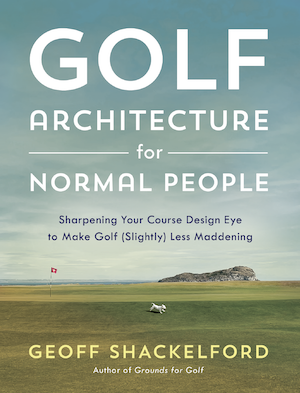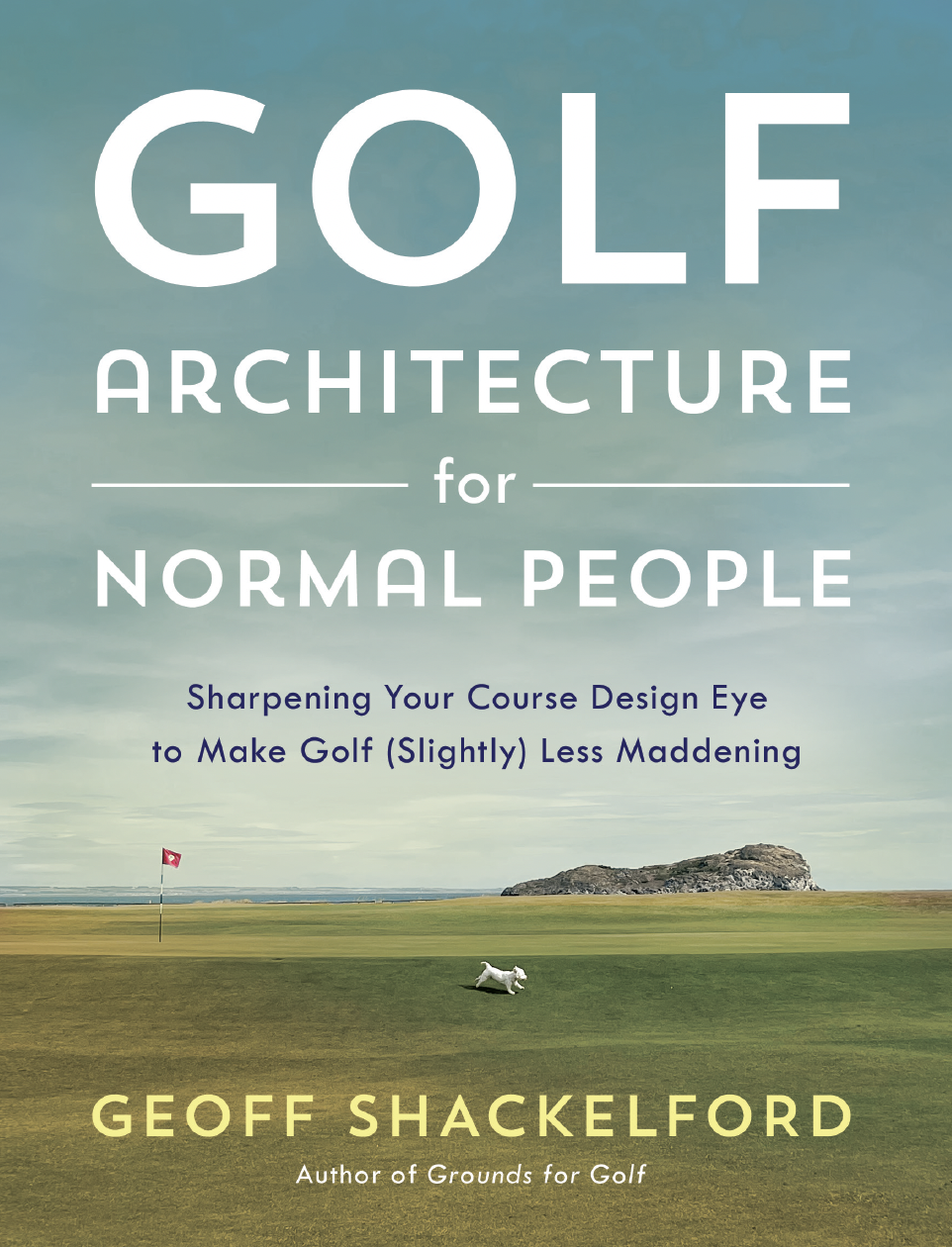When you come to think of it that is the secret of most of the great holes all over the world. They all have some kind of a twist. C.B. MACDONALD
"I'm going to have to get a pilot's license for this thing, because it's always flying."
/ Fun read from Bill Fields on Johnny Bulla, two-time runner up at the Old Course and great American character.
Fun read from Bill Fields on Johnny Bulla, two-time runner up at the Old Course and great American character.
Bulla tried several putters on the Old Course's vast greens in 1939 after the putter he took overseas was ruled nonconforming by the Royal and Ancient Golf Association, but there wasn't much magic in any of them, particularly inside 10 feet. As the United Press reported of his final-round 73, "All through the round he alternately kissed the club when he holed out the long ones and threw it off the green in disgust when he missed the short ones, including a four-inch job on the morning round. Once, after missing a putt, he shouted: 'I'm going to have to get a pilot's license for this thing, because it's always flying.'"
"On a spring day in 1951, Austin mayor Taylor Glass got a call from City Hall that two 'colored boys' were playing golf."
/DVR Watch: Nicklaus-Snead Match
/"Franklin Delano Roosevelt understood misery. He was a golfer."
/ Just to show you how current I am, here's Jeff Silverman and John Garrity's SI preview piece on the WPA and Bethpage. I just read it again and couldn't get over this FDR anecdote.
Just to show you how current I am, here's Jeff Silverman and John Garrity's SI preview piece on the WPA and Bethpage. I just read it again and couldn't get over this FDR anecdote.
Whitten better add this to the next Architects of Golf!
"He loved playing golf more than just about anything else," says H.W. Brands, author of Roosevelt, Traitor to His Class. FDR even kept an old golf ball on his desk in the Oval Office. "I believe that his inability to play made the game even more important to him, and he liked the idea that the government could make it possible for ordinary people to play."
No ordinary man himself, Roosevelt gained deep insight into the sufferings of others through his own transformative struggle with polio — the humbling midlife counterpoint to the ease and privilege into which he was born. He was eight when his father had a six-hole course built on the family's Hyde Park, N.Y., estate, and by his early teens Franklin was shooting in the low 80s. In 1899, as secretary-treasurer of the nine-hole club on Campobello, the island playground for the wealthy off the coast of Maine, he designed and supervised the enlargement of tees and greens. Fresh out of Harvard in 1904, he won the club championship. No golfing president can top that.
Old Golf Auctions Wrapping Up
/Some stellar prices on architecture classics like The Links, and some absurd prices too for things like Tom Doak's Confidential Guide pushing $1200!?).
It's also sad to see that Tony Jacklin is auctioning off all but his soiled Ryder Cup underwear.
Nice Get For USGA Museum?
/Sarazen's double eagle wood...
 Jean Hopfensperger pens a lengthy piece on the club sand the mystery surrounding its authenticity.
Jean Hopfensperger pens a lengthy piece on the club sand the mystery surrounding its authenticity.
"Don’t discount the efforts of those who write golf club histories. They are the game’s true local heroes."
/As a former club historian, naturally I'd nominate Alistair Tait for calling them heroes.
"Great stuff that made one wonder why the stymie was ever outlawed in match play."
/John Huggan visits the World Golf Village in St. Augustine and comes away very impressed with the quality of the exhibitions.
And just round the corner is a replica of the old stone bridge that crosses the Swilcan Burn on the Old Course's 18th fairway. Apparently, the bridge was originally built so that packhorses could haul mussels across the burn. Did not know that.
My favourite item, however, is the short film of a July 30, 1904 match between Harry Vardon and James Braid – a dour so-and-so on the admittedly scant evidence of this cinematic epic – at the Murrayfield Golf Club in Edinburgh. Watched by a 3,000-strong crowd, the contest ended all square, but not before Braid had flummoxed Vardon with a crafty stymie on one green. Great stuff that made one wonder why the stymie was ever outlawed in match play. Blocking the opponent's path to the cup had a sound tactical role to play in the psychological warfare that is head-to-head golf. The look on Vardon's face was a picture.
Lord knows we couldn't have that in today's major match play events. People might actually watch.
1960 U.S. Open Getting The HBO Treatment
/"How, for instance, did Taylor manage a four-round total of 295 in 1909 over a course measuring 6,500 yards? Sheer brilliance is the answer."
/ Peter Dixon plays Deal with hickories in uncomfortable clothes and comes away impressed by the golf of yesteryear as well as the club also known as Royal Cinque Ports.
Peter Dixon plays Deal with hickories in uncomfortable clothes and comes away impressed by the golf of yesteryear as well as the club also known as Royal Cinque Ports.
A Look At Oakhurst
/ Chico Harlan in the Pittsburgh Post-Gazette looks at Oakhurst Links, a must if you are ever in West Virginia.
Chico Harlan in the Pittsburgh Post-Gazette looks at Oakhurst Links, a must if you are ever in West Virginia."Why do they want to stop Tiger or Phil [Mickelson] or Ernie [Els] from playing great golf?"
/That's Neil Coles talking, subject of John Huggan's Tea On A Sunday In Scotland Scotland On Sunday column this week. Coles not only talks abou this fear of flying, but golf in America, the state of the game and--close your eyes Fairhaven readers--the dreaded ball. Take it away Mr. Coles...
"I have no regrets about not playing more over there. I did three tours in America. The money was no good anywhere else. I didn't really enjoy it much, to be honest. The life wasn't for me. The sameness of the motels and the courses was boring. And there was no prospect of taking a week off to go home for a break. My best finish over there was third place in Palm Springs. I won $1,500 for that. My game was reasonably well suited to the courses, and I enjoyed the big ball."
Ah, the ball. Like so many of his contemporaries, Coles has watched the evolution of golf at the highest level over the past decade or so with something akin to horror. The modern game, all crash-bang-wallop, is a long way from the subtle, nuanced sport that he played at his peak.
"There is no doubt that shaping shots is a lot more difficult these days," he sighs. "The ball doesn't curve like it used to. The small ball had to be shaped in order to get any sort of control. You had to hold it up in crosswinds. It was so lively. If these guys played with a small ball today, they wouldn't know what had hit them.
"The arrival of the big ball in Europe had an effect on the type of player who could be successful. I remember little guys like Dai Rees, Sid Scott, Charlie Ward and Ken Bousfield being successful. They would have no chance today. So the big ball changed the face of golfers. They got bigger and stronger. The little guy is very much the exception nowadays.
"Now, is that for the better? I don't know, but it is certainly different. It's my contention that we can't go on improving the ball. The golf courses are going to have to be 8,000 yards to challenge the top players, and they will be unplayable for everyone else."
Putting on his course architect's hat for a moment, Coles is as close to animated as he can get, and his fear for the future of the sport in which he has spent his life is obvious.
"I think if we got the R&A and the USGA around this table, they would agree about the ball going too far. But they are scared of lawsuits. And the problem is that, in order to keep the scores up, major championship courses are being set up in ever more extreme ways.
"I shudder when thinking of Carnoustie in 1999 or the US Open at Shinnecock in 2004. And the Masters this year was borderline. I do wonder if the punter wants to pay good money to watch top players scuffing around like they did at those three events. The very best players were embarrassed. I don't want to see that. I want to see people going round in the 60s, and making birdies and eagles. That's entertainment to me.
"I subscribe to the view that a great golf course should yield low scores to a great player playing well. If it doesn't, there is something wrong with that course. If someone as good as Tiger [Woods] shoots 20 under par to win, it is a compliment to the golf course. That's my philosophy, but it isn't everyone's.
"Clearly, the USGA want par to win the US Open every year. They don't seem to care that they are putting on a show for millions of people. I don't understand where they are coming from. Why do they want to stop Tiger or Phil [Mickelson] or Ernie [Els] from playing great golf?"
L.A. Times Public Golf Special Section
/
Colorization of a historic Griffith Park clubhouse photo by Tom Naccarato (click to enlarge)The L.A. Times has published a meaty special section today on L.A. public golf. It includes my plea for a restoration of George Thomas's Griffith Park restoration and my architectural critique of 10 great values. and five overrrated layouts.
There's also Daniel Wexler's guide to historic courses and his look at desert golf.
There's also Tiger's memories of SoCal golf and Thomas Bonk looks at the renovated Torrey Pines South.
Peter Yoon covers the impact of internet-based tee time reservation systems.
Glenn Bunting talks to Dave Pelz.
And the editors make their picks for the best of SoCal golf.












